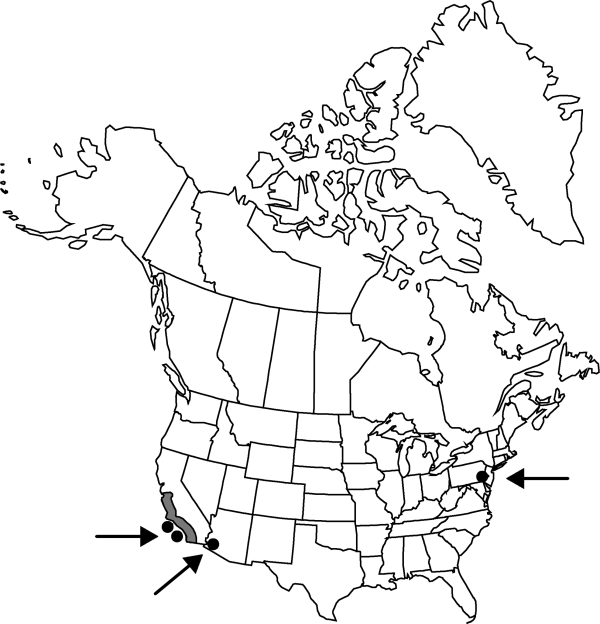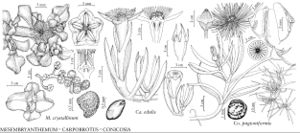Mesembryanthemum crystallinum
Sp. Pl. 1: 480. 1753.
Plants annual to biennial. Stems trailing, dichotomously branched, to 1 m. Leaves sessile or petiolate; petiole, ± clasping; blade ovate to spatulate, flat, 2–20 cm, margins undulate. Inflorescences terminal or axillary, cymes; proximal bracts opposite, leaflike; distal bracts alternate, reduced; flowering profusely. Flowers 7–10 mm diam.; hypanthium aging red, round; calyx lobes 5, unequal; petals 20–40, connate into tube, white, aging pink; stamens 30. Capsules coarsely papillate. Seeds 200, rough with minute tubercles. 2n = 18.
Habitat: Coastal bluffs, cliffs, ballast dumps, disturbed ground
Elevation: 0-100 m
Distribution

Ariz., Calif., Pa., Mexico (Baja California), South America, Europe (Mediterranean), Africa, Atlantic Islands, Australia.
Discussion
Introduced from southern and western Africa, Mesembryanthemum crystallinum is in cultivation as an ornamental. Its use to treat scurvy by sailors, its popularity as an ornamental potted plant aboard ships, and its occurrence in ballast dumps (as in Pennsylvania) were some of the means by which this species has become so widespread throughout the world. Gauchos in Argentina used it to treat venereal disease.
